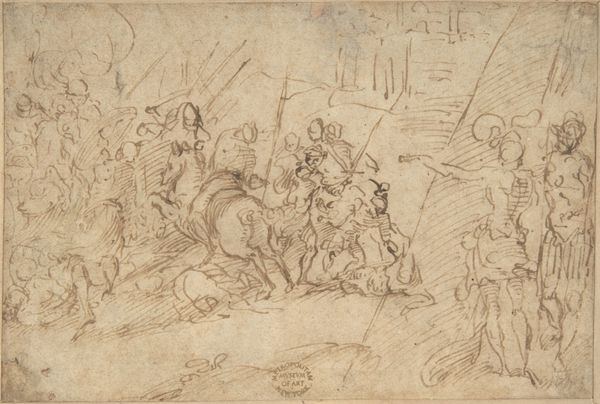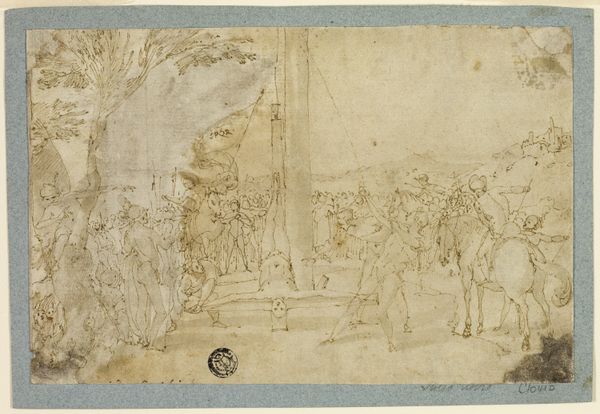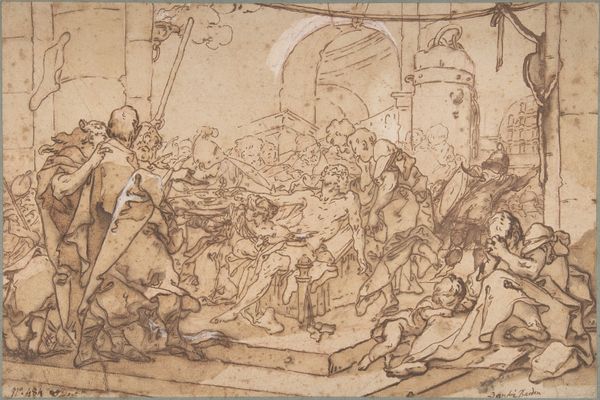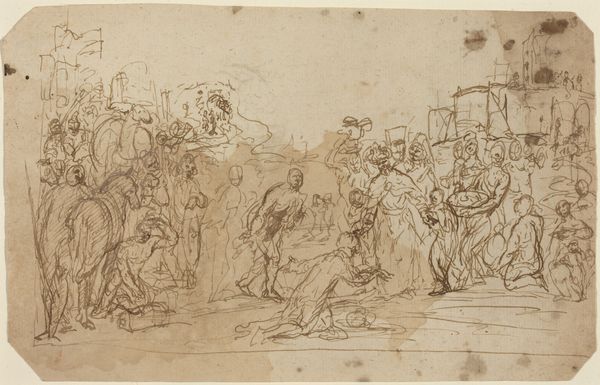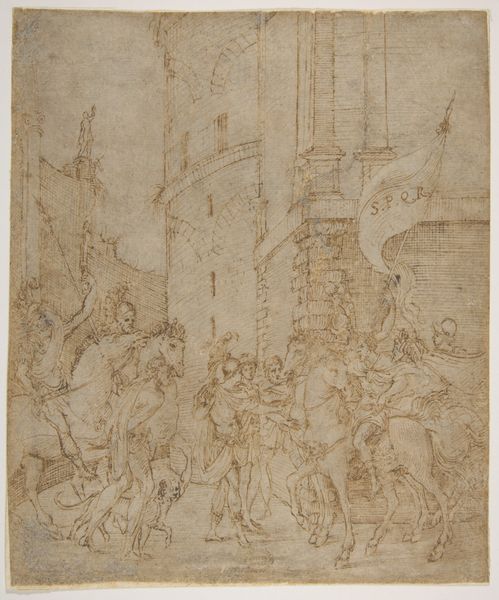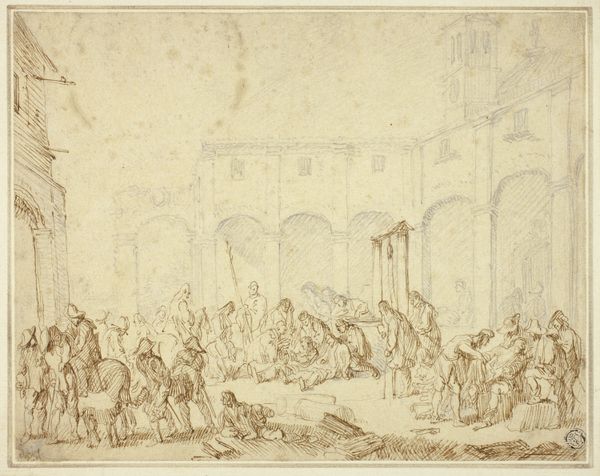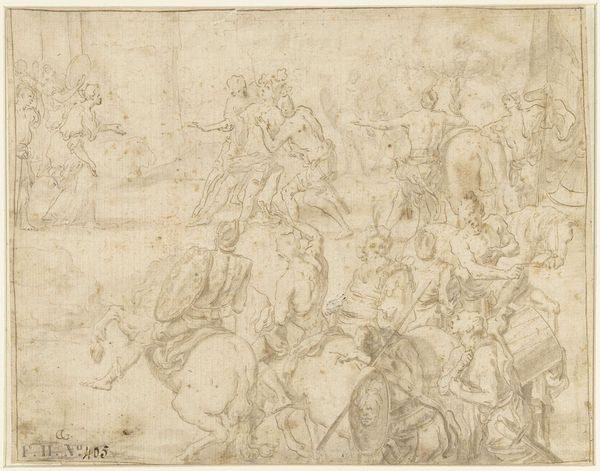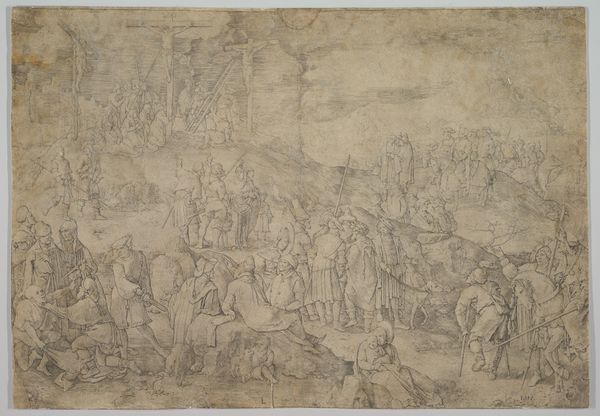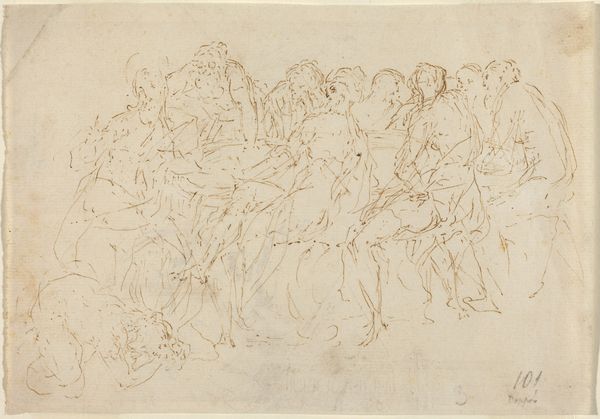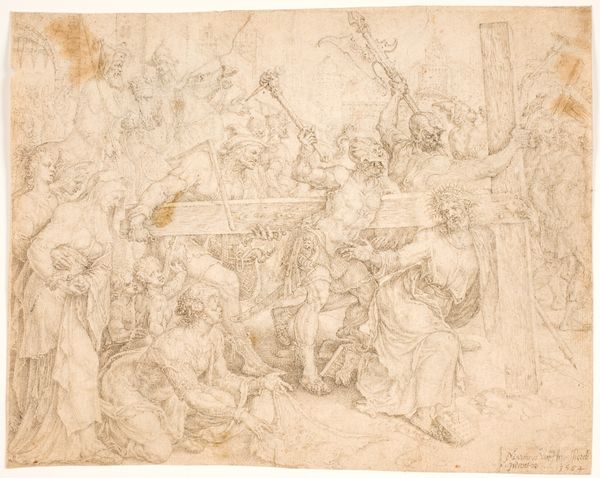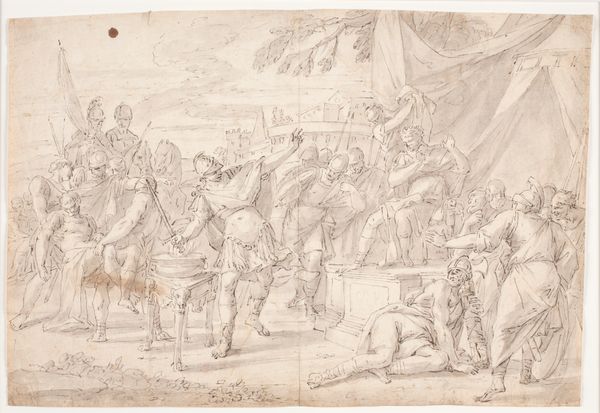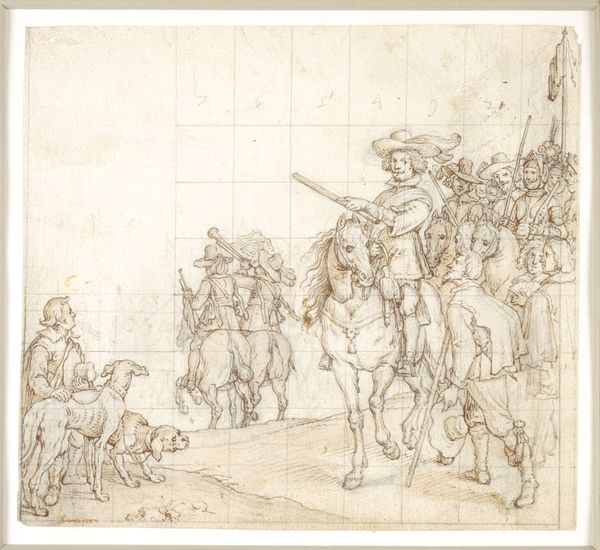
The Last Supper (recto) c. 1621
0:00
0:00
drawing, brown-ink, ink, pen
#
drawing
#
narrative-art
#
ink painting
#
brown-ink
#
pencil sketch
#
etching
#
mannerism
#
figuration
#
ink
#
pen
#
history-painting
Dimensions: 7 1/4 x 10 5/16 in. (18.42 x 26.19 cm) (sheet, irregular)8 11/16 x 11 1/16 in. (22.07 x 28.1 cm) (mount)
Copyright: Public Domain
Pietro D'Asaro, also known as il Monocolo di Racalmuto, created this pen and brown ink drawing, "The Last Supper," sometime in the early to mid-17th century. The image depicts the iconic biblical scene, but it also offers a glimpse into the social and cultural context of its time. D'Asaro was working in Sicily, which was then under Spanish rule. Religious art served a crucial public role, reinforcing the power of the Catholic Church amid the tensions of the Counter-Reformation. Here, we see the artist grappling with established traditions of representing sacred events. The composition, with its long table and central Christ figure, echoes Leonardo da Vinci's famous fresco. But D'Asaro's sketch also includes more informal details, like the figures on the left and the servants and dog on the right. These elements add a touch of everyday life, grounding the divine narrative in a tangible reality. To fully understand this work, we can turn to archival records, religious histories, and studies of Sicilian art and culture. By exploring these resources, we can better appreciate how D'Asaro navigated the complex social and institutional forces that shaped his artistic vision.
Comments
No comments
Be the first to comment and join the conversation on the ultimate creative platform.
